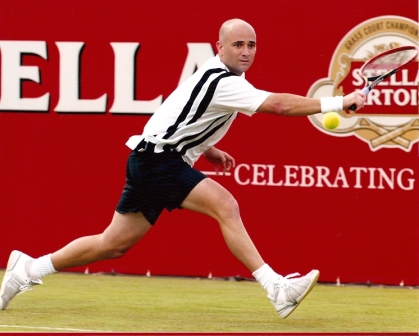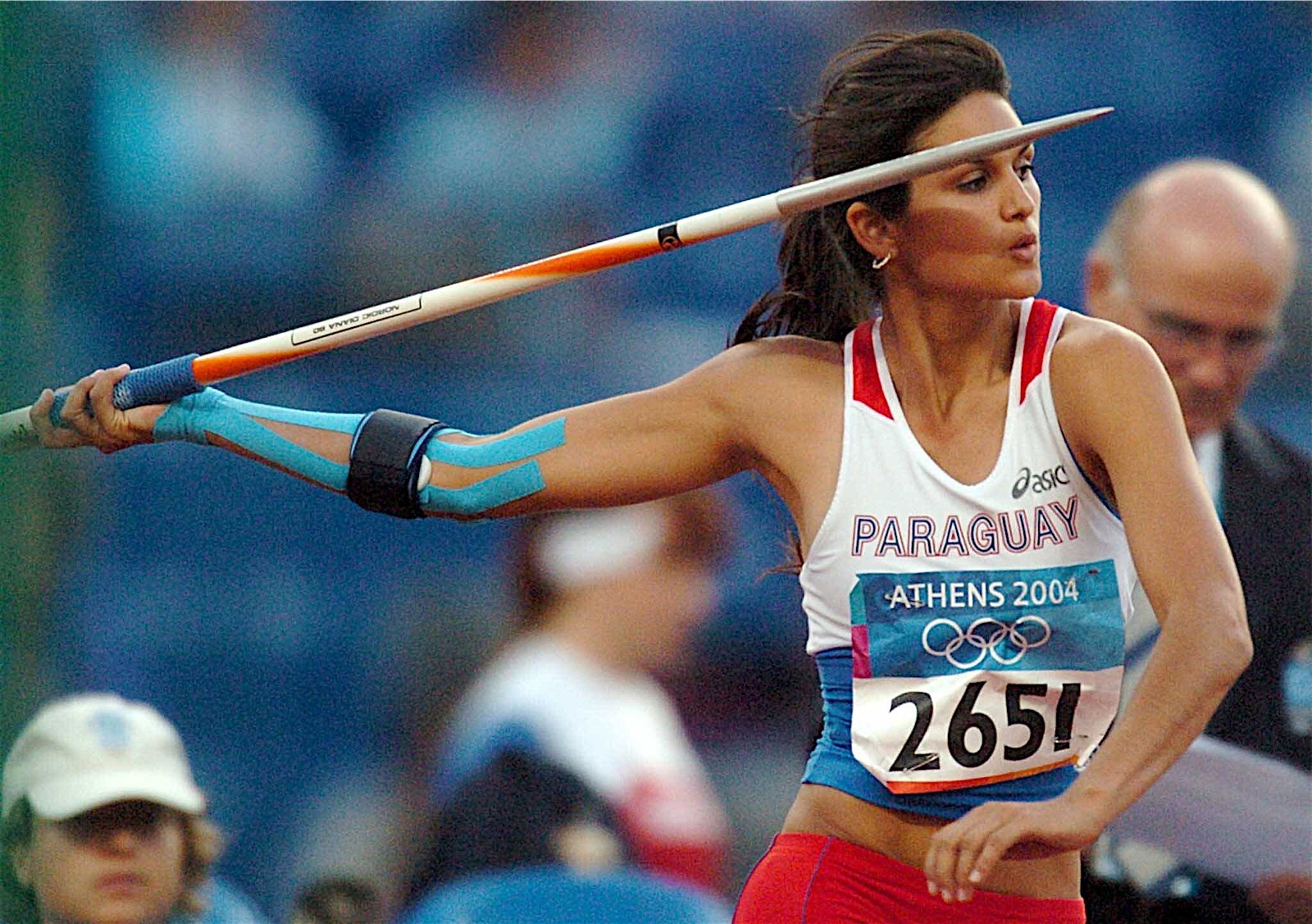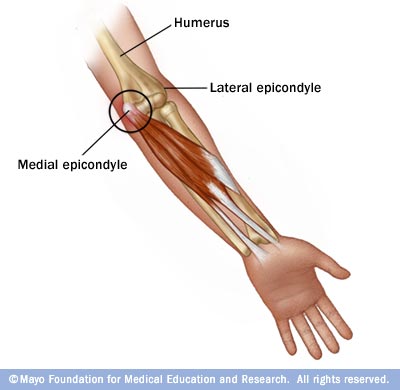Common Soft and Connective Tissue Conditions
Strains and Ruptures
Muscle strains of elbow flexors and elbow extensors can evolve over time with overuse, or can present suddenly with sudden forces to the joint. Tendons can rupture completely, which produces signficant bruising and a sudden loss of elbow strength and elbow and forearm function. Athough distal biceps and tricep tendon ruptures are rare, overuse and improper lifting techniques may result in rupture and loss of elbow function.
A PTA should be mindful of providing the appropriate exercise interventions, specifically when adding resistance or weight to the distal end.
Medial Epicondylitis - Medical elbow tendinopathy
- onset is associated with faulty mechanics (e.g., with throwing, golfing, swimming) and with repetitive use (e.g. with hand tools)
- repeated microtrauma to medial flexors and pronator tendon leads to tendon overload and failure
- primary muscle involved: flexor carpi radialis, pronator teres; some involvement of palmaris, flexor carpi radialis, and flexor ulnaris
Video approximately 2 minutes
Lateral Epicondylitis - Lateral Elbow Tendinopathy
- 7% of all sports injuries (most common injury in elbow and forearm)
- presents most often in age 35-50
- tendon degeneration due to microtrauma from hyperpronation

- high risk for chronic pain and dysfunction due to soft tissue changes from repetitive overuse/chronic inflammation
- can be a misdiagnosis: some evidence of referred cervical pain, peripheral nerve entrapment, bony changes or myofascial pain syndromes presenting with similar pain patterns
Videos approximately 4 minutes
Triceps Tendinitis
- rare
- sudden severe strain (javelin, tennis, volleyball)
- may evolve into a "snapping triceps" over posterior medial aspect of elbow due to subluxation or dislocation of portion of triceps and/or ulnar nerve
- incidence can be associated with decreased triceps flexibility
Medial Collateral Ligament Injuries
Valgus Overload Triad

- serious injury in the overhead athlete (baseball, javelin, racquet) involving the posterior medial joint capsule, the ulnar nerve, and the ulnar ligament (MCL)
- may also result from traumatic valgus strain during fall on outstretched hand
- ligament tears, tendon avulsions, tendinitis and bony changes may result
- in children, overload forces can result in asymmetric growth changes and disruption (e.g. stress fracture) to the growth plate (Little Leaguer's Elbow)
Summary of Common Soft and Connective Tissue Conditions
|
Diagnosis |
Common Description |
Involved Structures
|
Contributing Factors
|
Signs and Symptoms |
|
Medial epicondylitis |
Golfer's Elbow |
Wrist flexors (common flexor tendon) and forearm pronators |
Poor mechanics with sports and repetitive grip |
Pain with resisted wrist flexion and forearm pronation; pain with passive wrist extension and supination; pain on medial epicondyle |
|
Lateral epicondylitis |
Tennis Elbow |
Wrist extensors (ext. carpi radialis brevis origin) forearm supinators |
Overloading with sport and leisure activities involving grip and pronated grip |
Pain with resisted wrist extension with elbow extension; pain with grip, pain in lateral epicondyle |
|
Triceps tendinitis |
Posterior Tennis Elbow |
Triceps insertion; ulnar nerve |
sudden strain to triceps in full arm extension |
Pain with resisted elbow extension; snapping sensation with elbow flex/ext on posterior medial elbow |
|
Valgus Overload Triad |
|
MCL, post-med joint capsule, ulnar nerve |
trauma; overuse in athletics |
Pain and instability with valgus testing |
|
(Epiphyseal Injury) |
Little Leaguer's Elbow
|
Accelerated growth of medial epicondyle; ulnar hypertrophy |
Overuse in throwing with strain to growth plate region in proximal forearm |
Pain and tenderness with loss of full extension |
|
Olecranon bursitis |
Student's Elbow |
Olecranon bursa, may include ulnar nerve |
Mild, repetitive pressure; weight bearing on elbows |
Swelling on posterior aspect cyst-like appearance, may include point tenderness in affected area |
Treatment:
- Protect: immobilization, rest, ice, modalities, submaximal isometrics, cross fiber massage. Splinting and/or use of a sling often follows acute injury to prevent loading through use of the hand
- Controlled motion: assisted and self-stretching, cross fiber massage, joint mobilization and MWM, resisted isometrics, progressive functional strengthening patterns
- Return to function: sport and activity specific, plyometrics
- Patient education to prevent recurrence with modifying lifting, hitting carrying and HEP for injury management and prevention

.jpg)